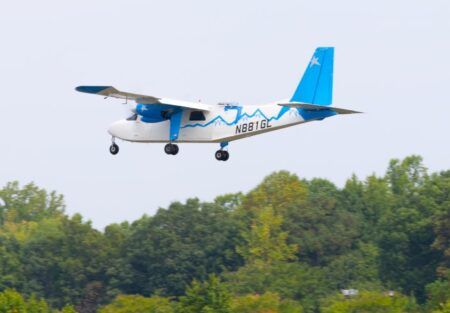Japan became the fourth country (after the USA, Russia and China) to test fly its own stealth jet when it carried out a test flight of the X2 demonstrator on April 22, creating what is hoped will be a boost for its domestic aerospace industry.
The Japan Ministry of Defense said the X2 took off from Nagoya Airport in Aichi Prefecture on the morning of Friday, April 22, and flew approximately 15km before it touched down at Japan Air Self-Defense Force’s (JASDF) Gifu Air Field. The X2 will be used as a test platform for testing advanced stealth and other technologies.
The prototype will undergo a further two years of testing before a decision is made on whether to develop a homegrown stealth fighter jet. “The maiden flight was significant to secure the necessary capability for a next-generation fighter jet,” Defense Minister Gen Nakatani told reporters in Tokyo after the flight. “We can expect technological innovation in the aerospace industry as well as application of that technology in different fields.”
Japan started the ¥39bn (US$333m) demonstrator project in 2009 to preserve its declining aerospace industry, aiming both to keep up with latest defense capabilities and, ultimately, sell Japanese arms overseas. As a result, the X2 engines are made by IHI Corp and its fuselage is developed by Mitsubishi Heavy Industries (MHI).
The demonstrator is also equipped with locally developed stealth technology, including material designed to deflect radar and minimize the so-called radar cross-section of detectability.
The demonstrator has been put through extensive testing since February when it was unveiled to the media, but technical problems delayed its maiden flight.
Mitsubishi Heavy Industries will deliver the demonstrator in late May to the Ministry of Defense, following one more test flight and further ground testing.
The Japanese government is expected to decide by 2018 whether to develop a homegrown stealth fighter jet, develop one jointly with other countries, or buy the F-35 from the United States. Industry experts suggest the domestic option could prove more expensive than buying the F-35.
Previously, MHI could only assemble US-designed fighters under license, but had no access to the highly sophisticated technologies that underpinned the designs.
April 29, 2016




